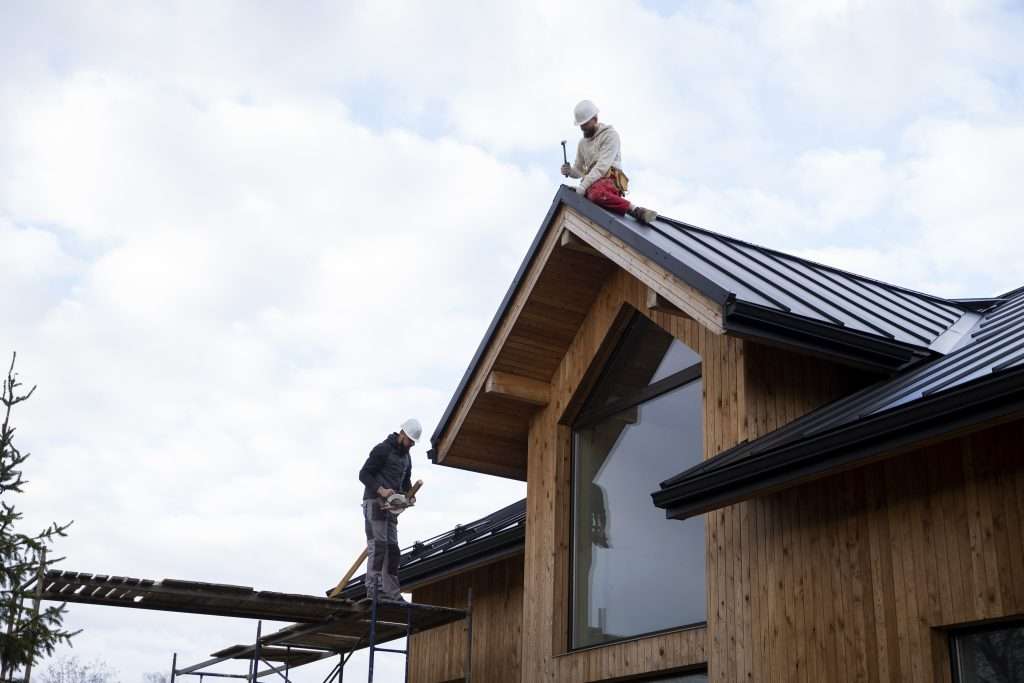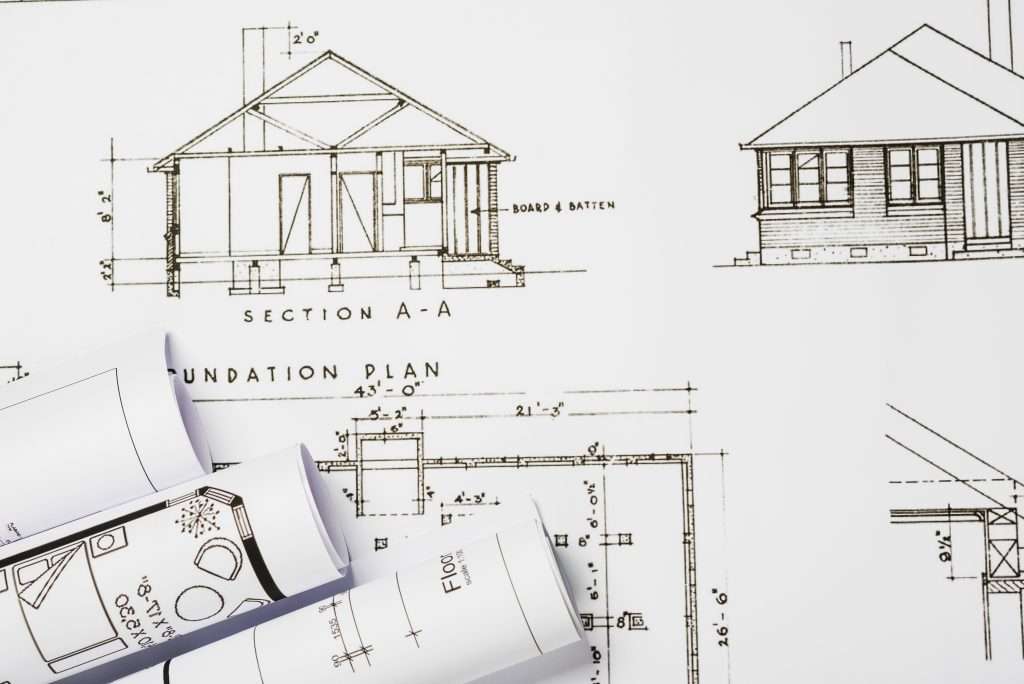One critical aspect of mobile home construction is the roof, which protects the home from the elements, provides insulation and contributes to its overall aesthetic appeal. Understanding the different types of mobile home roofs, the materials used, and their maintenance requirements is essential for ensuring the longevity and comfort of the home.
Contents
ToggleThis guide will cover various types of mobile home roofs, materials used, maintenance tips, and options for repairs and replacements.
Types of Mobile Home Roofs
The type of roof on a mobile home often depends on factors like regional climate, home design, and personal preference. Here are some common types of roofs found on mobile homes:
Flat Roof:
Flat roofs are among the most straightforward and economical mobile home roof designs. Their low slope allows for easier installation and maintenance. Flat roofs are often covered with EPDM rubber, PVC, or TPO membranes for waterproofing and durability.

Pitched Roof:
Pitched roofs have a steeper slope than flat roofs and are designed to shed water and snow effectively. They can be single-pitched (shed roof) or double-pitched (gable roof). Pitched roofs are commonly covered with metal panels, asphalt shingles, or, occasionally, fiberglass shingles.
Gable Roof:
A gable roof is a pitched roof with two sloping sides that meet at a ridge in the middle. This design allows for better ventilation and water drainage. Gable roofs are often covered with metal panels or asphalt shingles and can provide a more traditional home appearance.
Hip Roof:
Hip roofs have slopes on all four sides that meet at a ridge. This design provides excellent stability and resistance to strong winds. Hip roofs are less common on mobile homes due to their complexity and cost but offer enhanced aesthetics and durability.
Curved Roof:
Some modern mobile homes feature curved roofs, typically made from materials like metal or fibreglass. Curved roofs can offer a distinctive look and may provide better wind uplift resistance than flat or pitched roofs.
Modified Bitumen Roof:
Modified bitumen roofs are asphalt-based membranes often used on flat or low-slope mobile home roofs. They are durable and flexible and provide excellent waterproofing properties. Modified bitumen roofs are installed in layers and can withstand temperature extremes and UV exposure.
Each type of mobile home roof has advantages and considerations regarding installation, maintenance, durability, and aesthetic appeal. When choosing a roof type for your mobile home, consider factors such as local climate, budget, and the expertise of roofing contractors available in your area. While other options are available, TPO roofing balances affordability, durability, and weather resistance, making it an excellent choice for mobile home roofs. Its lightweight nature, heat reflectivity, and ease of maintenance add to its appeal for mobile homeowners.
Mobile Home Roof Construction Details
Unlike traditional houses built to withstand decades of harsh weather, mobile homes prioritize lightweight materials and a streamlined design for efficient factory production and safe transportation. This translates to flat or slightly pitched roofs constructed with oriented strand board (OSB) trusses or laminated veneer lumber (LVL).
These trusses provide structural integrity while remaining lightweight. The roof sheathing, typically OSB again, is then attached to the trusses and covered with a water-resistant membrane. Finally, the outer layer, such as asphalt shingles, metal panels, or even rubber membranes for flat roofs, is installed to complete the weatherproofing.
However, this focus on efficiency comes with its own set of considerations. Mobile home roofs are not designed for heavy snow accumulation or extreme winds. Homeowners in these regions must be extra vigilant about maintaining a proper roof pitch to prevent snow buildup and ensure all seams and fasteners are secure enough to handle strong winds. Upgrading to metal roofs, while more expensive, can offer superior wind resistance compared to traditional asphalt shingles.

Older mobile homes, typically built before the 1970s, often employed more straightforward construction methods than their modern counterparts. Walls were commonly constructed with plywood or sheet metal, and insulation levels might not meet current standards. Roofs were frequently flat or slightly pitched, and materials like tar and gravel were sometimes used for waterproofing. While these older mobile homes offer a more affordable option, they may be less energy-efficient and require frequent maintenance or upgrades to ensure comfort and safety.
Here are some common aspects of mobile home roof construction:
Materials Used
Many mobile homes have roofs made from metal panels or sheets. These are lightweight and durable, offering protection against the elements. Some newer mobile homes may use asphalt shingles, similar to traditional homes, though this is less common.
Roof Structure
Mobile home roofs typically have simpler structures than traditional homes. They often consist of trusses or rafters designed to support the roof covering (metal or shingles) and provide structural integrity. The roof structure is usually lightweight to accommodate the home’s transportability.

Insulation
Insulation in mobile home roofs is essential for energy efficiency and comfort. It is typically installed between the roof structure and the interior ceiling panels. Common types of insulation used include fibreglass batts, spray foam, rigid foam boards, or blown-in cellulose.
Ventilation
Proper ventilation is crucial to prevent moisture buildup in the roof cavity, which can lead to mould and structural damage. Vents are often installed along the eaves and the roof’s ridge to allow air circulation.

Maintenance Access
Mobile homes may have access panels or hatches installed in the ceiling or roof structure to facilitate maintenance and inspection of utilities (wiring, plumbing) and insulation.
Roof Overhangs
Mobile homes typically have minimal roof overhangs compared to traditional homes. This is partly due to the need to transport the home without exceeding road width limits.
Roof Pitch
Mobile homes’ roof pitch (slope) can vary, but it is generally lower than traditional houses. This is to maintain transportability and to ensure structural stability.
Repairing a Mobile Home Roof
Unlike traditional houses, mobile homes require specific repairs and materials. Mobile home roof repair costs can vary depending on the size of your home, the extent of the damage, and the materials used. Here’s a ballpark figure for different scenarios:
- Minor roof repair (patching a leak): $150 – $500
- The roof over (adding a new layer on the existing roof): $1,500 – $3,500 (asphalt or metal)
- Complete roof replacement: $4,000 – $7,000 (asphalt or metal)
Material Matters:
The type of roof you have and the materials used for repair will impact cost and durability. Here’s a breakdown of common mobile home roof materials:
- Asphalt Shingles: Affordable and easy to find, but may not last as long as other options (15-20 years).
- Metal Roofing: Metal Roofing is the most durable option, lasting 40-70 years but also the most expensive.
- Rubber Membranes are great for flat roofs. They offer water resistance and flexibility at a moderate price point (20-30 years).
- TPO Membranes are another excellent option for flat roofs. They are known for their heat resistance and affordability (they have a similar lifespan to rubber).
Methods for Mending:
The repair method depends on the damage and the type of roof you have. Here are some common approaches:
- Patching: Used for small leaks or holes, patching the affected area with new material.
- Roof Over: This applies to existing roofs nearing the end of their lifespan, where a new layer of material is added over the old one.
- Complete Replacement: The most extensive repair involves removing the existing roof and installing a new one.
Remember:
- DIY vs. Professional: While some minor repairs might be manageable as a DIY project, extensive repairs or replacements are best left to experienced professionals.
- Permits and Inspections: You might need permits for roof repairs, depending on your location. Always check with your local authorities before starting any work.
- Preventative Maintenance: Regular inspections and minor repairs can extend the lifespan of your roof and save money in the long run.
Mobile home roofs are designed to be weather-resistant, with seams sealed and fasteners installed correctly to prevent water infiltration.
Best Insulation for Mobile Home Roof
Choosing the best insulation for a mobile home roof involves considering efficiency, cost-effectiveness, and ease of installation. Here are some options commonly used for insulating mobile home roofs:
- Spray Foam Insulation is a highly effective option because it creates a seamless, airtight barrier that provides excellent insulation and helps seal gaps and cracks. However, it can be expensive and requires professional installation.
- Fibreglass batt insulation and rolls or batts are a more traditional option. It’s relatively affordable and can be installed by homeowners with basic DIY skills. However, it requires careful installation to avoid gaps and compression, which can reduce its effectiveness.
- Reflective Foil Insulation consists of layers of foil that reflect radiant heat away from the home’s interior. It’s advantageous in hot climates but may need to be combined with other types of insulation for optimal effectiveness.
- Rigid Foam Insulation: Rigid foam boards are lightweight and offer high insulation value per inch of thickness. They are moisture-resistant and easily cut to size, making them suitable for mobile home roofs.
- Blown-In Cellulose Insulation: This is another option where cellulose fibers are blown into the roof cavity. It’s eco-friendly and can conform to irregular spaces, providing good thermal insulation. However, special equipment is required for installation.
When choosing insulation for a mobile home roof, consider your climate, budget, and the condition of your roof. It’s also important to ensure proper installation to maximize energy efficiency and comfort. If you’re unsure which type of insulation is best for your specific situation, consulting with mobile home roofer near you can provide valuable guidance.
Also read this article: Mobile Home Metal Roof Guide: Ideas, Advantages, and Downsides.
Venting a Mobile Home Roof
If proper ventilation isn’t addressed, mobile homes can be prone to heat buildup and moisture accumulation. This is where roof vents become crucial players in maintaining a healthy and comfortable environment within your mobile home. Roof vents facilitate the natural exchange of air, allowing hot, humid air to escape the attic space and drawing in more relaxed, fresher air.
This constant air circulation helps regulate temperature, preventing excessive heat buildup that can lead to discomfort, damage to your roof materials, and even increased energy consumption for your cooling system. Additionally, proper ventilation helps prevent moisture condensation, which can cause mold growth and other structural issues within your mobile home. Investing in appropriate roof vents and ensuring adequate airflow can create a more comfortable living environment while extending the lifespan of your mobile home’s roof and overall structure. Here is a valuable resource for finding the best mobile home roofing companies near you.